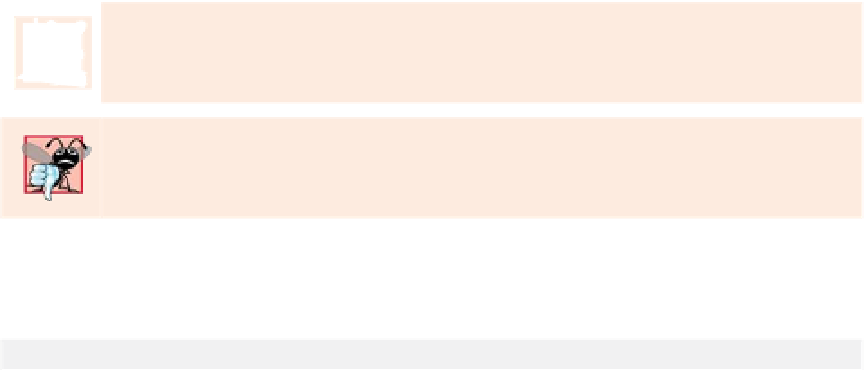Java Reference
In-Depth Information
Method
maximum
Consider
maximum
's declaration (lines 28-41). Line 28 indicates that it returns a
double
val-
ue, that the method's name is
maximum
and that the method requires three
double
parameters
(
x
,
y
and
z
) to accomplish its task. Multiple parameters are specified as a comma-separated
list. When
maximum
is called from line 21, the parameters
x
,
y
and
z
are initialized with copies
of the values of arguments
number1
,
number2
and
number3
, respectively. There must be one
argument in the method call for each parameter in the method declaration. Also, each argu-
ment must be
consistent
with the type of the corresponding parameter. For example, a pa-
rameter of type
double
can receive values like 7.35, 22 or -0.03456, but not
String
s like
"hello"
nor the
boolean
values
true
or
false
. Section 6.7 discusses the argument types that
can be provided in a method call for each parameter of a primitive type.
To determine the maximum value, we begin with the assumption that parameter
x
contains the largest value, so line 30 declares local variable
maximumValue
and initializes it
with the value of parameter
x
. Of course, it's possible that parameter
y
or
z
contains the
actual largest value, so we must compare each of these values with
maximumValue
. The
if
statement at lines 33-34 determines whether
y
is greater than
maximumValue
. If so, line 34
assigns
y
to
maximumValue
. The
if
statement at lines 37-38 determines whether
z
is
greater than
maximumValue
. If so, line 38 assigns
z
to
maximumValue
. At this point the
largest of the three values resides in
maximumValue
, so line 40 returns that value to line 21.
When program control returns to the point in the program where
maximum
was called,
maximum
's parameters
x
,
y
and
z
no longer exist in memory.
Software Engineering Observation 6.5
Methods can return at most one value, but the returned value could be a reference to an
object that contains many values.
Software Engineering Observation 6.6
Variables should be declared as fields only if they're required for use in more than one method
of the class or if the program should save their values between calls to the class's methods.
Common Programming Error 6.1
Declaring method parameters of the same type as
float x,
y
instead of
float x,
float
y
is a syntax error—a type is required for each parameter in the parameter list.
Implementing Method
maximum
by Reusing Method
Math.max
The entire body of our maximum method could also be implemented with two calls to
Math.max
, as follows:
return
Math.max(x, Math.max(y, z));
The first call to
Math.max
specifies arguments
x
and
Math.max(y,
z
).
Before
any method
can be called, its arguments must be evaluated to determine their values. If an argument is
a method call, the method call must be performed to determine its return value. So, in the
preceding statement,
Math.max(y,
z
) is evaluated to determine the maximum of
y
and
z
.
Then the result is passed as the second argument to the other call to
Math.max
, which re-
turns the larger of its two arguments. This is a good example of
software reuse
—we find the
largest of three values by reusing
Math.max
, which finds the larger of two values. Note how
concise this code is compared to lines 30-38 of Fig. 6.3.





